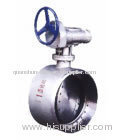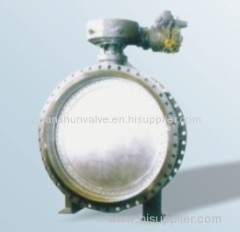
|
Henan Quanshun Flow Control S&T Co., Ltd.
|
Wafer Type Plastic Butterfly Valve
| Payment Terms: | T/T,WU |
| Place of Origin: | Henan, China (Mainland) |
|
|
|
| Add to My Favorites | |
| HiSupplier Escrow |
Product Detail
Name:Wafer Type Plastic Butterfly Valve
Classification: Butterfly Valve
Model:D473X
It is a quarter-turn rotational motion valve, that is used to stop, regulate, and start flow
Easy and fast to open
90° rotation of handle provides complete closure or opening of valve
Equipped with so-called gearbox, where the handwheel by gears is connected to stem
This simplifies the operation of valve, but at expense of speed
Advantages:<ul>
Compact design requires considerably less space
Compared to other valves:<ul>
Light in weight
Quick operation requires less time to open or close
Available in very large sizes
Low-pressure drop and high-pressure recovery</ul></ul>
Disadvantages:<ul>
Throttling service is limited to low differential pressure
Cavitation and choked flow are two potential concerns
Disc movement is unguided and affected by flow turbulence</ul>
Types:<ul>
It has short circular body, round disc, metal-to-metal or soft seats, top and bottom shaft bearings, and a stuffing box
The construction of valve body is varied
Commonly used design is wafer type that fits between two flanges
Another type, the lug wafer design, is held in place between two flanges by bolts that join the two flanges and pass through holes in the valve's outer casing
Available with flanged, threaded and butt welding ends, but they are not often applied</ul>
Seat disk and stem of a valve:<ul>
Stopping flow is achieved by the valve disk sealing against a seat that is on the inside diameter periphery of the Valve body
Often an elastomeric seat material will be used
Disk and stem of valve consists of two parts, and there a two methods to be fastened together</ul>
Easy and fast to open
90° rotation of handle provides complete closure or opening of valve
Equipped with so-called gearbox, where the handwheel by gears is connected to stem
This simplifies the operation of valve, but at expense of speed
Advantages:<ul>
Compact design requires considerably less space
Compared to other valves:<ul>
Light in weight
Quick operation requires less time to open or close
Available in very large sizes
Low-pressure drop and high-pressure recovery</ul></ul>
Disadvantages:<ul>
Throttling service is limited to low differential pressure
Cavitation and choked flow are two potential concerns
Disc movement is unguided and affected by flow turbulence</ul>
Types:<ul>
It has short circular body, round disc, metal-to-metal or soft seats, top and bottom shaft bearings, and a stuffing box
The construction of valve body is varied
Commonly used design is wafer type that fits between two flanges
Another type, the lug wafer design, is held in place between two flanges by bolts that join the two flanges and pass through holes in the valve's outer casing
Available with flanged, threaded and butt welding ends, but they are not often applied</ul>
Seat disk and stem of a valve:<ul>
Stopping flow is achieved by the valve disk sealing against a seat that is on the inside diameter periphery of the Valve body
Often an elastomeric seat material will be used
Disk and stem of valve consists of two parts, and there a two methods to be fastened together</ul>
Related Search
Wafer Type Butterfly Valve
Wafer Type Valve
Wafer Type Check Valve
Wafer Butterfly Valve
Butterfly Valve Wafer
Lug Type Butterfly Valve
More>>












